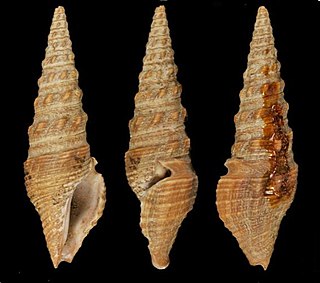
The Pyraloidea are a moth superfamily containing about 16,000 described species worldwide, and probably at least as many more remain to be described. They are generally fairly small moths, and as such, they have been traditionally associated with the paraphyletic Microlepidoptera.

Perigonia lusca, the half-blind sphinx or coffee sphinx, is a moth of the family Sphingidae. It was first described by Johan Christian Fabricius in 1777.
Ancyloptila is a genus of moths of the family Crambidae. It contains only one species, Ancyloptila lactoides, which is found on Aru.

Argyria is a genus of moths of the family Crambidae. The genus was described by Jacob Hübner in 1818.

Catharylla is a genus of moths of the family Crambidae. It has Neotropical distribution from Costa Rica to southern Brazil.
Davana is a genus of moths of the family Crambidae. It contains only one described species, Davana phalantalis. The identity of this species is unknown, since the type is lost.

Lineodes is a genus of snout moths of the subfamily Spilomelinae in the family Crambidae. The genus was described by Achille Guenée in 1854, with Lineodes hieroglyphalis as the type species.
Nacoleiopsis is a genus of moths of the family Crambidae. It contains only one species, Nacoleiopsis auriceps, which is found in Sakhalin.
Oronomis is a genus of moths of the family Crambidae. It contains only one species, Oronomis xanthothysana, which is found in India (Sikkim).
Pythagoraea is a genus of moths of the family Crambidae. It contains only one species, Pythagoraea categorica, which is found on the Society Islands.

Pachynoa is a genus of moths of the family Crambidae.

Tetridia is a monotypic moth genus of the family Crambidae described by William Warren in 1890. Its single species, Tetridia caletoralis, was described by Francis Walker in 1859. It is found in China, northern India, Sri Lanka, Myanmar, Malaysia, Papua New Guinea, Japan, Taiwan and Australia, where it has been recorded from Queensland.
Tomissa is a genus of moths of the family Crambidae. It contains only one species, Tomissa concisella, which is found in Sarawak.

Acronicta interrupta, the interrupted dagger moth, is a moth of the family Noctuidae. The species was first described by Achille Guenée in 1852. It is found across southern Canada south of the boreal forest, from New Brunswick west to eastern Alberta, south to Georgia, Nebraska and Arizona.

Inquisitor interrupta is a species of sea snail, a marine gastropod mollusk in the family Pseudomelatomidae, the turrids and allies.

Monodonta is a genus of moths of the family Crambidae. It contains only one species, Monodonta passalis, which is described from Mount Kebea in New Guinea. The genus name is a junior homonym of Monodonta Lamarck, 1799 but no replacement name is currently available.

Codakia is a genus of saltwater clams, marine bivalve molluscs in the family Lucinidae.
Pyrausta staiusalis is a moth in the family Crambidae. It is found in Brazil.

Lineodes interrupta is a moth in the family Crambidae. It was described by Zeller in 1873. It is found in Mexico and the United States, where it has been recorded from Florida, Louisiana, Oklahoma and Texas.
Pachynoa interrupta is a moth in the family Crambidae. It was described by Whalley in 1962. It is found on the Solomon Islands.











